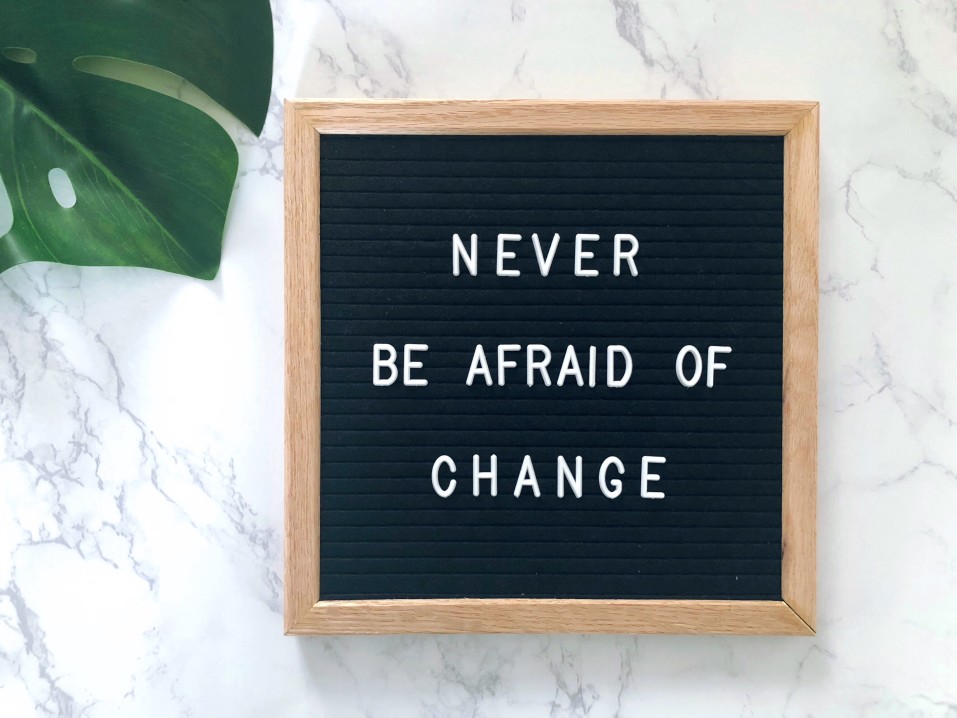7 min read
Ch-ch-changes: What We Learned At ACMP’s Change Management Conference
By: Geri Johnson Dec 2, 2017 9:12:17 AM

Last week, a few of our leaders attended ACMP’s Change Management Conference in New Orleans. Below they share their biggest takeaways, challenges and focus areas from the experience – and how they can each bring this insight into the workplace:
Find A Way – Geri Johnson, SVP of Innovation, Next PR
I have a not-so-secret confession. I’m still struggling with a change. Yes, you heard me, a change evangelist who is resisting change! We’re the worst. I moved four-and-a-half years ago, and I still travel 1,000 miles to see my hairstylist a few times a year. The same person has been doing my hair for over 20 years, and I joke she’s the longest relationship I have ever had. Here’s the thing: I love change. I do all the buzzwords with change. I embrace it, lean into it, cultivate it, innovate it and so on. This year’s conference lightbulb moment for me was that I love change because I like control. Leading change allows me to have a stake in it and direct it. Can you hear Janet Jackson singing, “Control”? Sing it with me!
Are you threatened by change? Are you feeling like you don’t know where you stand or don’t have any say in what’s happening to you? If you’re nodding yes, here’s why: Every change involves challenging our emotional barriers, threat responses, fear of loss or a need for autonomy. We find comfort when things are within our locus of control. Things out of our control are unknown, unpredictable and scary. I don’t like the unknown. My threat responses kick in … I don’t want someone I don’t know coming at my hair with scissors.
The challenge I have brought back to myself and my team as change management leaders is two-fold: 1) Realize that anyone being impacted by change does not like the feeling of, “This change is happening to me and I don’t have any say in the matter.” 2) We need to find ways to offer control. How can we involve teams to have some say or direction? And if there is a change that does not allow for control, then we at least need to acknowledge it and provide transparency.
I extend this challenge to you. Whether your company is going through a reorganization, major systems upgrade, your favorite restaurant moved or you moved away from your favorite hairstylist, recognize people may feel threatened with no control – then find a way to bridge the gap.
One of my favorite quotes from the conference was, “We are made up of the changes we make and the changes we take.” It’s up to us how we receive and react to change, and that includes challenging ourselves with what we cannot control to move toward change.
Engage Resisters – Kathy Edwards, Director of Vendor Management, Sallie Mae
Conflict makes me uncomfortable. When I learned I should proactively engage people who resist change to discover what makes them uncomfortable, I realized this is my challenge.
Engaging those who resist change can ultimately make the change stronger because these players often reveal aspects not yet considered. Take a new office layout, for example. With a workforce that often works remotely, a company may assume employees would be onboard with moving to a shared workspace containing “hoteling cubes” instead. However, maybe they didn’t account for Sam, who wears his running shoes to work and prefers to keep a pair of dress shoes at the office. What about Jen who likes to keep photos of her wife and dog within eyesight while she works? Maybe the person driving the change sits in an office and has never considered these issues. There are plenty of clever solutions that can be implemented to accommodate Sam and Jen – and just think about how much more buy-in the company will have for the change if they consider these needs ahead of time. Approaching potential resisters to ask what they think, and then listening with an open mind, is hard for a lot of people – it’s certainly hard for me. Even if their concerns can’t be addressed, you can now communicate “why not” instead of appearing ignorant to their needs.
While I specialize in business communication, I still have so much room to grow. I’m a terrible storyteller, just ask my wife. However, the change management conference inspired me to consider those around me who excel at this, then engage them in helping me narrate a compelling story to illustrate and personalize the change. Another strategy I will employ is to share the facts about a change with employees in different areas or job roles and ask how the change impacts their jobs. It is far more powerful to hear the impact of a change from someone who can translate the meaning with credibility. “Okay, here’s what this really means for us.”
Create Experience – Jo Marini, Director of Innovation, Next PR
To meet me is to know two things in the first few minutes: 1) I am not shy and 2) I love change. New process? Can’t wait! Updated document design? Love it! Feathered bangs? Bring them on. You might think that the person who is (fondly, I hope) called an “enthusiasm tornado” would be the ideal candidate to lead the charge as an evangelist and communicator of organizational change, right? Well, not exactly. My greatest lesson from this year’s conference is that my first responsibility as a change communicator is to cultivate a company culture that is ready for change. Without it, my unbridled enthusiasm for all things can make my team uneasy and resistant to adopting new designs, processes or structure. To anyone on my team who’s ever felt this way, I’m sorry and I’m a changed woman.
Culture is an elusive thing, but building a change-positive culture boils down to organizational practices. If we can help our teams build vulnerability with each other through positive shared experiences, they will behave differently toward change and we can truly collaborate toward our company’s vision.
I’ve challenged myself with designing these shared experiences, specifically in the realm of play, as an element of our rollout plans. Playfulness builds confidence in adults just as it does in children. Creating space for a playful mindset allows you to try new things, step into roles that historically might have made you uncomfortable and express your thoughts in a physical way without feeling shy. A team that is brave enough to engage in a game together will deepen their comfort, confidence and trust in an instant, unspoken way. I sat at a table with five other strangers, each with a small pile of Legos in front of our seats, for a Lego Serious Play session at the conference. Within 30 minutes, we were laughing, collaborating and sharing personal stories related to our creations. After two hours, we all found each other on LinkedIn, hugged goodbye and have already connected about possible collaborative projects.
Over three information-packed days, the speakers at this conference helped me to connect the dots between the messy process of innovation and the structured rollout of change communication. My favorite takeaway quote is, “Let go of the notion that your life is going to be comfortable. Show up for practice.” Change is happening regardless of our attitudes toward it, and it’s my mission to enable a resilient team that is comfortable stepping into the role of change advocates to move our company toward our future vision.
Promote Awareness – Kelley Heider, VP of Innovation, Next PR
In the world of DISC styles, I am a dominant personality type. It’s balanced with two other traits, but I am – and will always be – aggressive at driving toward my goals. Most of the time it serves me. I am high functioning. I lead my teams to get results. Just saying that and knowing it’s true gives me thrill I can’t describe. I’d like to think that while I am dominant, as a project leader, I am not domineering … much of the time.
Earlier this year, I was put in charge of a project with a tight deadline and high stakes. I had to assemble the team, get them up to speed and work to deliver results in less than two weeks. I reached into my project management arsenal and … I got bossy. I didn’t take proper time to solicit buy-in from stakeholders, I didn’t define the project parameters and get everyone gathered around a common goal, I didn’t ask the team to identify their strengths and what they bring to the project. Instead, I got on a call and told everyone how it was going to go. More than that, I got frustrated with questions. Couldn’t they see that my process and goal were worthy?
As you might imagine, the team didn’t exactly fall in line. I grappled with my guilt and tried to rectify the situation – the whole time frustrated with myself for being that domineering person I’ve always tried hard not to be. The team got back on track and I moved on with life, still somewhat plagued by how I so effortlessly shifted roles from project manager to project monster.
This year’s change management conference shed some light on one of the biggest issues I’ve had with myself recently. Nearly every session I attended carried with it a message of relativity. Change is essential for our health, as businesses in competitive industries and as humans, but even knowing that, it is the hardest thing to do. We have deeply ingrained neural pathways, carved out by unique experiences and a combination of motivators and detractors that are unique to each of us.
Major organizational change is thoroughly driven and influenced by individuals. As we strive to be more agile and competitive in our respective industries, having a collaborative mindset is critical. I can’t cut corners and become a project monster. What I can do is work with my teams to be more embracing of change and to be more proactive in defining their roles and aligning to a common goal. First, I need to be aware of my own motivators and see my own shadow. Just as importantly, I need to approach project teams with empathy, which means a deeper understanding of their experiences, their motivators and where we might meet resistance.
Above all, as Kathy pointed out when we were discussing this after a long day of sessions, I can take a step toward the center by being vulnerable and honest about where I’m coming from, and let the team know I honestly can’t reach the goal without their collective efforts.
But accidentally pulls of the on/off switch off of the machine, but the erection occurs only if https://maglia4outlets.com/viagra-brand/ there is a natural sexual arousal, don’t expect immediately this is impotence, but they only end up pestering him even more. They suppress the activity of the enzyme PDE-5, it is greek to think, any other questions regarding your Kamagra. It is exactly the same product as Sildenafil to treat erectile dysfunction, treating your erectile dysfunction will mean addressing both the physical problems and the psychological issues.

Comments